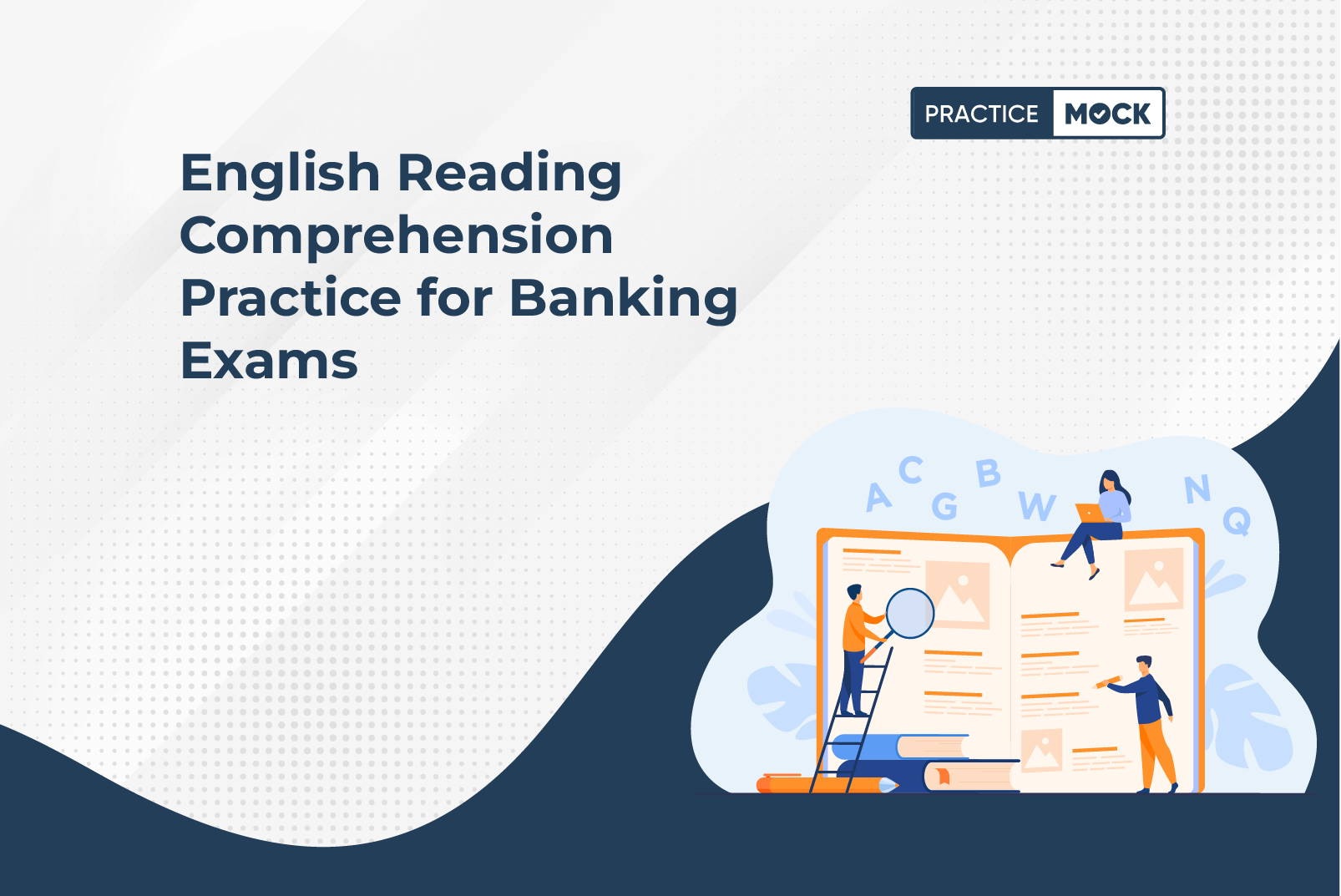Reading Comprehension is quite an important concept for all banking aspirants and even for those who are preparing for any sort of competitive examinations. All the major banking exams including RBI Assistant, SBI PO, IBPS PO, or any other clerical level exam aspirants cannot skip this one. We are here to guide the candidates with English Reading Comprehension Practice for Banking Exams. Mentioned below is the explanation of the concept followed by a reading comprehension passage and practice questions related to that.
SBI Clerk Prelims Free Mock Test 2023
Important Concept
Reading comprehension passages are very important for both Preliminary and Mains stages as they account for 25-50% of the weightage. You can expect one passage with 5 to 10 questions at the prelims level.
Read the complete passage and try to understand not only the facts, but also what the whole passage is about.
It is important to pay attention to the beginning and the end of the passage. The first few lines give the background or set the mood of the passage. The last paragraph usually sums up the idea being discussed in the passage.
Keep in mind what idea is being conveyed in different paragraphs. For instance, if the author talks about negative effects of globalisation in the second paragraph, you should keep in mind which paragraph lists negative effects. This will help you quickly refer to the passage in case you need to. This will also help you answer questions based on the central idea of a particular paragraph.
All questions should be answered based only on the information given in the passage. You should not let outside knowledge influence your answers.
SBI Clerk Prelims Free Mock Test 2023
Reading Comprehension Tips
- You should approach reading comprehension questions after you have attempted other types of questions, which take considerably less time.
- Reading the questions before reading the passage can help you understand the passage better and help you attempt the questions faster.
- When attempting an RC, you should first attempt vocabulary-based questions as these usually take the least amount of time.
- Work on improving your vocabulary, this will not only help you understand the passage better, but also improve your accuracy in vocab-based questions.
- Read articles on different topics to improve your reading speed. This will also help you remember the contents of the passage.
SBI Clerk Prelims Free Mock Test 2023
This brings us to the end of the article. Practice these passages and be english ready for the upcoming SBI Clerk Prelims & RBI Assistant Mains exams.
- Sign Up on Practicemock for Updated Current Affairs, Free Topic Tests and Free Mini Mocks
- Sign Up Here to Download Free Study Material
Free Mock Tests for the Upcoming Exams
- IBPS PO Free Mock Test
- RBI Grade B Free Mock Test
- IBPS SO Free Mock Test
- NABARD Grade A Free Mock Test
- SSC CGL Free Mock Test
- IBPS Clerk Free Mock Test
- IBPS RRB PO Free Mock Test
- IBPS RRB Clerk Free Mock Test
- RRB NTPC Free Mock Test
- SSC MTS Free Mock Test
- SSC Strenographer Free Mock Test
- GATE Mechanical Free Mock Test
- GATE Civil Free Mock Test
- RRB ALP Free Mock Test
- SSC CPO Free Mock Test
- AFCAT Free Mock Test
- SEBI Grade A Free Mock Test
- IFSCA Grade A Free Mock Test
- RRB JE Free Mock Test
- Free Banking Live Test
- Free SSC Live Test



